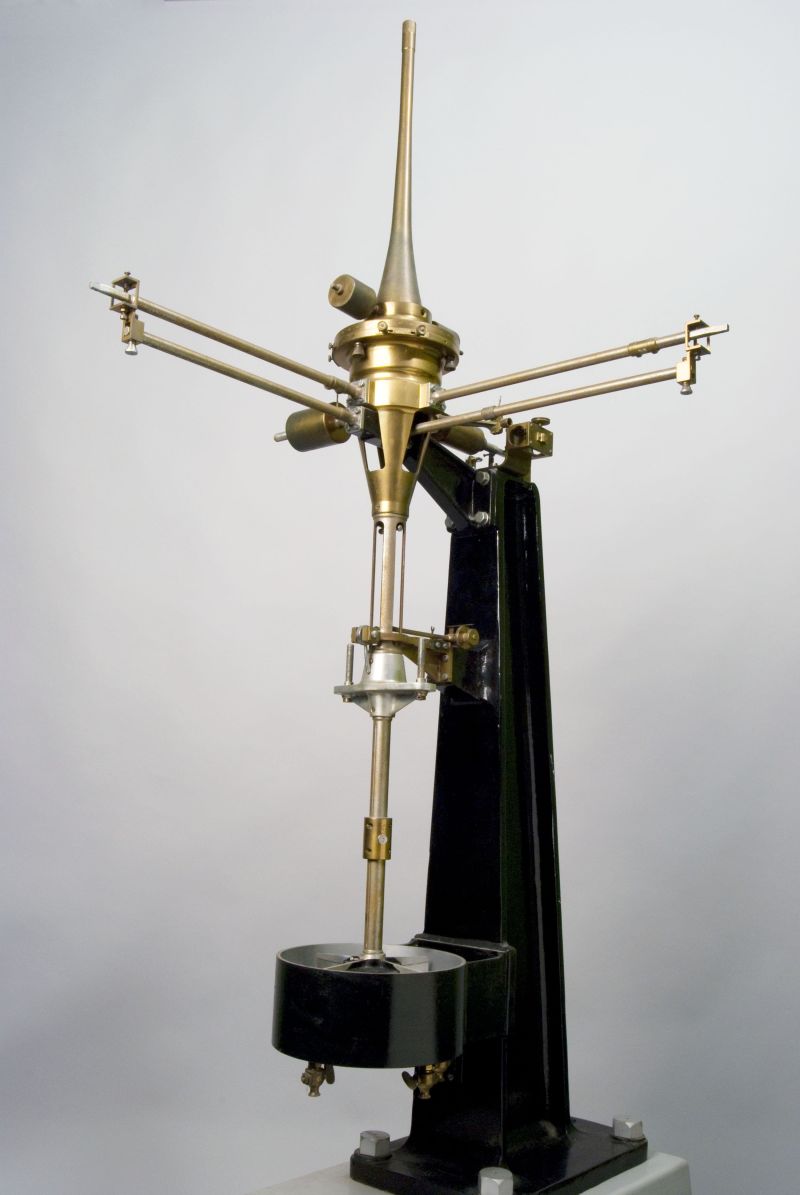
Aerodynamic Wind Tunnel Balance

Description
The balance designed by Leonard Bairstow in 1912 is a pyramidal balance used for measuring forces and torques.
MIT built its first wind tunnel in 1913 in the first building on what would become MIT's Cambridge campus in 1916. It was the first university in the United States to offer a graduate degree in aeronautical engineering in 1914. When MIT hired Jerome Hunsaker in 1913 to teach aeronautical engineering, the first thing Hunsaker did was visit all the laboratories and wind tunnels in Europe. Thanks to MIT President Richard Maclaurin's previous association with the National Physical Laboratory in England, Hunsaker secured copies of a plan for a basic atmospheric wind tunnel. Hunsaker's assistant Edward Warner and student Donald Douglas built the wind tunnel and installed the Cambridge Scientific balance which this model was used on. Soon thereafter, Warner became chief scientist for the fledgling National Advisory Committee for Aeronautics (NACA). First thing he did? Build the NACA's first wind tunnel based on the MIT/NPL design. Donald Douglas left MIT to found Douglas Aircraft Company. For nearly a century, the department has produced numerous pioneers in the field. [MIT 150 Exhibition label text]
Additional Information
Related organizations

Related objects

Vought VE-7 wind tunnel model
1983.009.034



